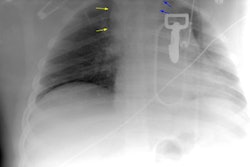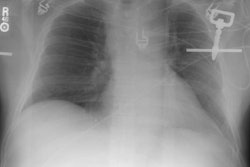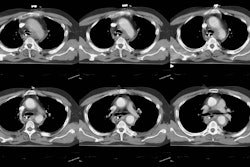Radiology 1999 Jun;211(3):835-44 (Comment in: Radiology. 2000 Jun;215(3):920-2)
Sentinel lymph node biopsy after percutaneous diagnosis of nonpalpable breast
cancer.
Liberman L, Cody HS 3rd, Hill AD, Rosen PP, Yeh SD, Akhurst T, Morris EA,
Abramson AF, Borgen PI, Dershaw DD.
PURPOSE: To determine the technical success rate of sentinel lymph node biopsy
in women with nonpalpable infiltrating breast cancer diagnosed by using
percutaneous core biopsy and to determine the frequency with which sentinel
lymph node biopsy obviated axillary dissection. MATERIALS AND METHODS:
Retrospective review revealed 33 women who underwent sentinel node biopsy after
percutaneous core biopsy diagnosis of nonpalpable infiltrating breast cancer.
Sentinel nodes were identified with radioisotope and blue dye; the procedure was
technically successful if sentinel nodes were found at surgery. All sentinel
nodes were excised. Axillary dissection was performed if tumor was present in
sentinel nodes. RESULTS: Sentinel nodes were found at surgery in 30 women (91%).
Sentinel nodes were identified with both radioisotope and blue dye in 22 (73%)
of these women, with only radioisotope in six (20%), and with only blue dye in
two (7%). Sentinel nodes were found in 12 (80%) of 15 women in the first half of
the study versus all 18 (100%) women in the second half (P = .08). Sentinel
nodes were free of tumor in 23 (77%) of 30 women. In six (86%) of seven women
with tumor in sentinel nodes, the sentinel nodes were the only nodes with tumor.
CONCLUSION: Sentinel node biopsy was successful in 30 women (91%) with
nonpalpable infiltrating carcinoma diagnosed with percutaneous core biopsy and
obviated axillary dissection in 23 women (70%). Using both radioisotope and blue
dye may increase the success rate. A learning curve exists, and success improves
with experience.



















